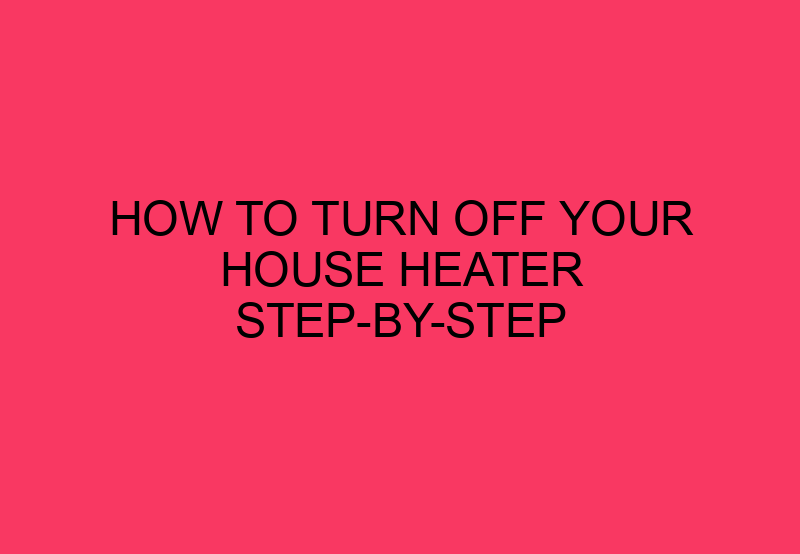Step 1: Locate Your Thermostat
When it comes to turning off a home heater, the first step is locating your thermostat. In most cases, it’s located on a wall in a central area of your house. Once you find it, locate the Off button or switch that immediately shuts off the heater. However, if you do not see any Off button, then proceed to the next step.
Step 2: Adjust The Temperature
The second step is to adjust the temperature on the thermostat. You can lower the temperature by switching the thermostat’s temperature setting to “cool” or “off.” This may not turn off the heater completely but it will make it stop heating up your space. Some smart thermostats come with voice control feature, for instance, Alexa, which makes it even easier for you to adjust the temperature.
Step 3: Turn Off The Gas Valve Or Circuit
For gas heaters, you can turn off the supply valve located near the heater. If your house has an electric heater, simply go to your circuit box and flip the switch that supplies power to the heater. Additionally, it’s a good idea to cut off the power supply in the circuit before doing anything on the heater.
Step 4: Check Your Pilot Light
If your heater has a pilot light, it’s important to ensure it is off after turning off the heater. This is because a continuously burning pilot light can be a fire hazard. You can check it by looking at the light source, there you can usually find a knob to turn it off.
Step 5: Clean Your Heater
After the heater has cooled down from being turned off, it’s important to clean it regularly. Cleaning can ensure that dirt and dust do not accumulate on the heater, reducing its efficiency and lifespan. Use a damp cloth or vacuum cleaner to remove debris that accumulated on the heater.
Conclusion
Turning off and ON your house heater is an essential activity that every homeowner needs to be familiar with. By following the above easy steps, one can easily identify and turn off the heater when it’s not in use. It’s important to clean the heater regularly, ensure that pilot lights are off, and cut off supply in the circuit when turning off the heater. These practices ensure that your house remains safe and reduces the likelihood of emergency and health risks.
